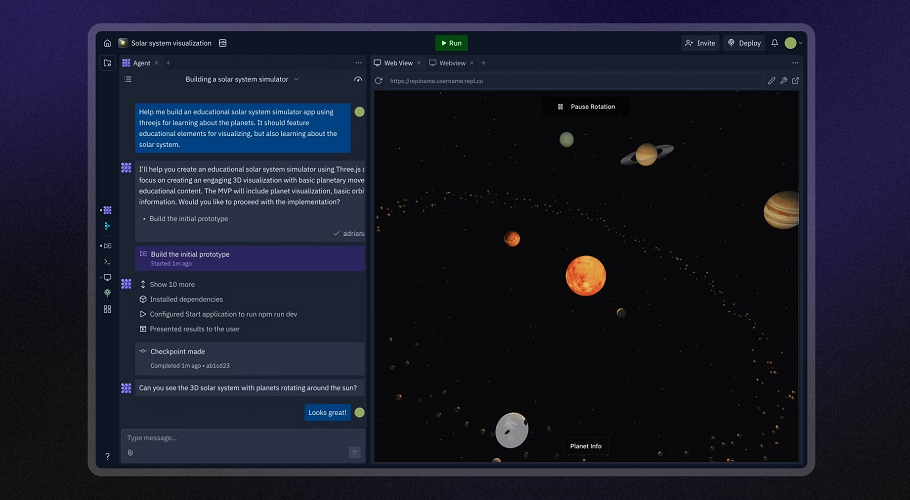In the modern development landscape, the demand for applications that run seamlessly across all platforms—web, desktop, and mobile—has never been higher. Traditionally, this required maintaining separate codebases, specialized teams, and complex build pipelines, leading to increased costs and slower development cycles. However, a new generation of tools is emerging to bridge this gap. At the forefront is Tauri, a framework that empowers developers to build fast, secure, and lightweight native applications for all major desktop and mobile operating systems using their existing web development skills.
Unlike older solutions such as Electron News, which bundle an entire Chromium browser with each application, Tauri leverages the operating system’s native webview engine. This architectural choice results in significantly smaller application bundles, lower memory consumption, and improved performance. The core of a Tauri application is written in Rust, providing a secure and high-performance backend that can interact directly with the operating system. This article provides a comprehensive guide on how to leverage Tauri to package any web application—from a modern single-page application built with React News or Vue.js News to a full-stack project powered by a local server like Laravel or a Node.js News framework—into a polished, cross-platform experience.
What is Tauri? A Modern Approach to Cross-Platform Development
Tauri is a toolkit for building desktop and mobile applications with any frontend framework and a Rust core. Its philosophy centers on security, performance, and developer flexibility. By separating the user interface from the core application logic, Tauri provides a robust architecture that is both powerful and easy to work with for web developers.
The Core Components: Rust Backend and Webview Frontend
Every Tauri application consists of two primary parts:
- The Rust Core: This is the application’s backend. Written in Rust, it manages the application window, handles native OS interactions, and exposes APIs to the frontend. Rust’s focus on memory safety and performance makes it an ideal choice for building a secure and efficient application core, eliminating entire classes of bugs common in other systems programming languages.
- The Webview Frontend: This is where your user interface lives. Tauri uses the OS’s built-in web rendering engine (WebView2 on Windows, WebKit on macOS/iOS, and WebKitGTK on Linux) to render your HTML, CSS, and JavaScript. This means you can use any web technology or framework you prefer, whether it’s a library like Svelte News or SolidJS News, or a more comprehensive framework like Angular News or Next.js News. The frontend assets are typically bundled using modern tools like Vite News or Webpack News.
This two-process model provides a secure sandbox for your UI while allowing the Rust backend to perform privileged operations, such as accessing the file system or making native OS calls.
How Tauri Integrates with Existing Web Projects
One of Tauri’s most powerful features is its flexibility in handling the frontend. You can integrate your web project in two primary ways:
- Bundling Static Assets: This is the standard approach for Single-Page Applications (SPAs). Your build tool (e.g., Vite, Rollup, Turbopack) compiles your project into a set of static HTML, CSS, and JS files. Tauri then bundles these files directly into the final executable.
- Proxying a Local Development Server: This method is perfect for full-stack frameworks like Laravel, Django, Ruby on Rails, or a backend built with Express.js News or NestJS News. Instead of bundling static files, you can configure Tauri to point its webview to a local development server. This allows you to run your entire web application, backend and all, inside a native desktop window, complete with hot-reloading and server-side rendering.
Practical Implementation: Bridging Your Web App to the Desktop
Let’s walk through the process of configuring a Tauri application to wrap a locally served web project, such as one built with Laravel. This same approach applies to any framework that runs its own development server.
Prerequisites and Initial Setup
Before you begin, you’ll need to install the necessary prerequisites for your operating system, which include the Rust toolchain, Node.js (for the CLI and frontend dependencies), and platform-specific build tools. The official Tauri documentation provides an excellent setup guide.

Once your environment is ready, you can scaffold a new Tauri project using the interactive CLI:
npm create tauri-appThe CLI will prompt you to choose a project name, a UI recipe (e.g., React, Svelte, Vanilla), and whether to use TypeScript. For our use case, you can start with any template, as we will be modifying the configuration to point to our external server.
Configuring Tauri to Serve a Local Web Application
The heart of a Tauri project’s configuration lies in the src-tauri/tauri.conf.json file. To connect Tauri to a local server (e.g., a Laravel app running on http://127.0.0.1:8000), you need to modify two key settings: devPath under build and add a beforeDevCommand.
devPath: This tells Tauri’s webview which URL to load during development.beforeDevCommand: This is a script that Tauri executes before starting its own development process. We’ll use this to launch our Laravel development server.
Here is an example configuration for a Laravel project:
{
"build": {
"beforeDevCommand": "php artisan serve",
"beforeBuildCommand": "npm run build",
"devPath": "http://127.0.0.1:8000",
"distDir": "../public",
"withGlobalTauri": true
},
"package": {
"productName": "my-laravel-app",
"version": "0.1.0"
},
"tauri": {
"allowlist": {
"all": false,
"shell": {
"all": false,
"open": true
}
},
"bundle": {
"active": true,
"targets": "all",
"identifier": "com.tauri.dev",
"icon": [
"icons/32x32.png",
"icons/128x128.png",
"icons/128x128@2x.png",
"icons/icon.icns",
"icons/icon.ico"
]
},
"security": {
"csp": "default-src 'self'; connect-src 'self' http://127.0.0.1:8000"
},
"windows": [
{
"fullscreen": false,
"resizable": true,
"title": "My Laravel App",
"width": 800,
"height": 600
}
]
}
}With this configuration, running npm run tauri dev will first execute php artisan serve, wait for the server to start, and then launch a native desktop window that loads your application from http://127.0.0.1:8000. Any changes you make to your Laravel project will be reflected instantly, just as they would in a regular web browser.
Beyond the Webview: Unleashing Native Power
Simply displaying a web page in a native window is only the beginning. Tauri’s true strength lies in its ability to bridge the gap between your web-based frontend and the native capabilities of the host operating system through its Rust core.
Inter-Process Communication (IPC) with Commands
Tauri allows your JavaScript frontend to invoke Rust functions, known as “Commands.” This enables you to perform tasks that are impossible in a browser, such as reading local files, executing system commands, or running computationally intensive logic without blocking the UI thread.
First, define a function in your src-tauri/src/main.rs file and annotate it with the #[tauri::command] macro.
// src-tauri/src/main.rs
// Prevents additional console window on Windows in release, DO NOT REMOVE!!
#
![cfg_attr(not(debug_assertions)
, windows_subsystem = "windows")]
// Learn more about Tauri commands at https://tauri.app/v1/guides/features/command
#[tauri::command]
fn greet(name: &str) -> String {
format!("Hello, {}! You've been greeted from Rust!", name)
}
fn main() {
tauri::Builder::default()
.invoke_handler(tauri::generate_handler
![greet])
.run(tauri::generate_context!())
.expect("error while running tauri application");
}Next, you must register this command in the .invoke_handler() in your main function. Now, you can call this Rust function from your frontend JavaScript/TypeScript code using Tauri’s API.
// In your frontend JavaScript file
import { invoke } from '@tauri-apps/api/tauri';
async function callRustBackend() {
try {
const response = await invoke('greet', { name: 'World' });
console.log(response); // Logs: "Hello, World! You've been greeted from Rust!"
} catch (error) {
console.error('Error invoking Rust command:', error);
}
}
callRustBackend();This powerful IPC mechanism is fundamental to building feature-rich desktop applications. It’s a key feature that makes tools like Tauri and its alternatives, such as Capacitor News, so effective.
Accessing Native APIs: File System, Notifications, and More

Tauri provides a pre-built JavaScript API that exposes many common native functionalities through an “allowlist” system for enhanced security. You can enable specific APIs in your tauri.conf.json to grant your application access to features like file dialogs, system notifications, the clipboard, and more.
For example, to open a native file dialog to select a text file, you first enable the dialog API in your configuration and then use the following JavaScript code:
import { open } from '@tauri-apps/api/dialog';
import { readTextFile } from '@tauri-apps/api/fs';
async function selectAndReadFile() {
// Open a selection dialog for text files
const selected = await open({
multiple: false,
filters: [{
name: 'Text',
extensions: ['txt', 'md']
}]
});
if (selected) {
// selected is a string with the path to the selected file
console.log(`User selected: ${selected}`);
const contents = await readTextFile(selected);
console.log(`File contents: ${contents}`);
} else {
console.log('User canceled the dialog.');
}
}
// Example usage: attach this to a button click
// document.querySelector('#my-button').addEventListener('click', selectAndReadFile);Production-Ready: Security, Performance, and Deployment
Moving from development to production requires attention to security, performance, and packaging. Tauri provides robust tools and best practices to ensure your application is ready for distribution.
Security Considerations
Security is a core tenet of Tauri. By default, all powerful native APIs are disabled. You must explicitly opt-in to the features your application needs via the allowlist in tauri.conf.json. This principle of least privilege significantly reduces the application’s attack surface.
Furthermore, you should configure a strict Content Security Policy (CSP) to prevent cross-site scripting (XSS) attacks by controlling which resources the webview is allowed to load. Tauri’s Rust backend also provides inherent memory safety, protecting against common vulnerabilities like buffer overflows.
Performance and Bundle Size

Because Tauri uses the system’s webview, the final application bundle is incredibly small. A “Hello World” Tauri app can be as small as a few megabytes, compared to the 50MB+ footprint of a similar Electron app. To optimize further, ensure your frontend assets are minified and tree-shaken using modern build tools. For UI testing, frameworks like Cypress News and Playwright News can be run against your development server, while unit tests for your Rust logic can be written using Rust’s built-in testing framework, or with tools like Jest News or Vitest News for your frontend code.
Building and Distributing Your Application
Packaging your application for distribution is as simple as running a single command:
npm run tauri build
This command will compile your Rust code, bundle your frontend assets, and generate native installers and packages for all major platforms: .msi on Windows, .dmg and .app on macOS, and .deb and .AppImage on Linux. Tauri also has a built-in updater, allowing you to seamlessly deliver updates to your users without requiring them to manually download and reinstall the application.
Conclusion
Tauri represents a significant step forward in cross-platform application development. By combining a high-performance, secure Rust backend with the flexibility and familiarity of web technologies, it offers a compelling solution for developers looking to expand their reach beyond the browser. Its ability to integrate with any web project—from a simple SPA built with Lit News or Alpine.js News to a complex server-rendered application—makes it an incredibly versatile tool.
The key takeaways are clear: Tauri enables the creation of smaller, faster, and more secure desktop and mobile applications while allowing you to leverage your existing web development skills and codebase. Whether you are a solo developer or part of a large team, Tauri provides a pragmatic and powerful path to delivering a unified experience across all major platforms. To get started, dive into the official documentation and begin experimenting with your own web projects.

